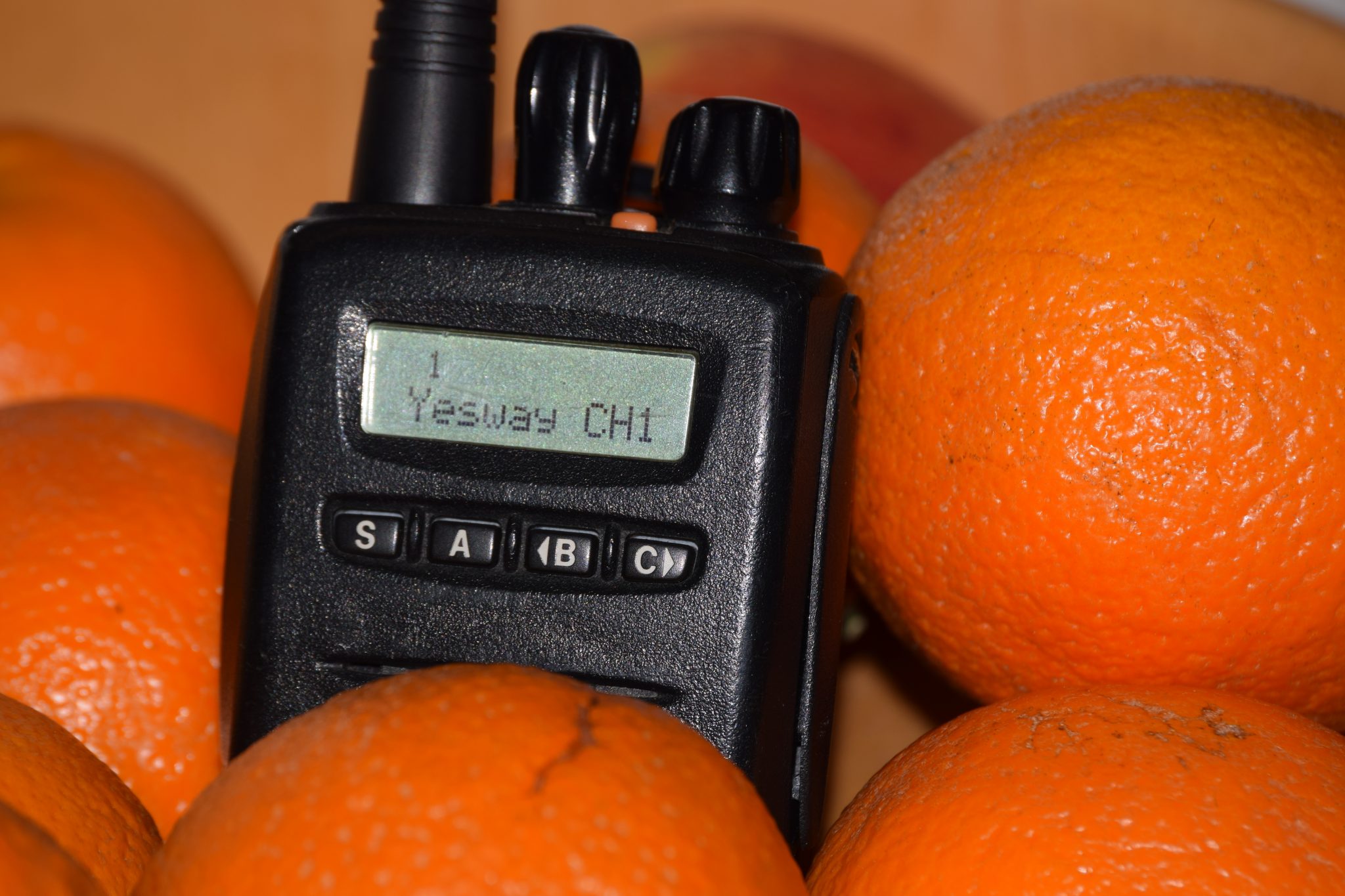Advanced RF Training
Advanced RF training course description
Learning Objectives of this course:
- Understand and be able to explain RF propagation.
- Be able to describe the importance of transmission lines in RF systems.
- Recognise reliability and performance issues in RF systems.
- Understand transmission measurements.
Target audience: Those working with RF systems, wishing to increase or refresh their knowledge of RF.
Duration of course: 3 Days.
Cost:
Course Content / what you will learn:
Understanding RF Propagation:
The Electromagnetic Spectrum: Delve into the various ranges of electromagnetic frequencies that encompass radio waves.
Electromagnetic Radiation: Grasp the fundamentals of how electromagnetic waves propagate through free space.
Spherical Wave Front: Explore the nature of waves propagating as spherical fronts.
The Space Wave: Investigate the characteristics and behavior of radio waves as they travel through space.
Receive Antenna below the Horizon: Understand how antennas positioned below the horizon receive signals.
Bending the Space Wave: Discover how space wave propagation can be manipulated through bending.
Ground Wave Path: Learn about the path of Ground (surface) waves and its implications.
Tilting of Surface Wave: Explore the phenomenon of tilting in surface wave propagation.
Conductivity: Comprehend the role of conductivity in RF propagation.
Layers of the Atmosphere: Explore the different atmospheric layers and their effects on wave propagation.
Variations of the Ionosphere: Understand the impact of ionospheric variations on signal propagation.
Variations caused by Solar Activity: Learn how solar activity influences signal propagation characteristics.
Multi-Hop Transmission: Explore the concept of signals using Skywave, taking multiple hops to reach their destination.
Classification of Radio Waves: Understand the different categories of radio waves based on their properties.
Fading: Grasp the concept of fading and its effects on signal quality.
Fading Reduction: Discover methods to reduce the impact of fading on signal transmission.
Free Space Path Loss: Learn about the loss of signal strength in free space propagation.
Shadowing of Radio Wave: Understand how obstacles create shadow zones for radio waves.
Signal Levels after Shadowing: Explore signal levels after encountering shadowing effects.
Radio Waves as Wavelets: Understand radio waves from the perspective of wavelet theory.
Fresnel Zone: Grasp the significance of the Fresnel zone in signal transmission.
Dive into the intricate world of RF propagation, on your advanced rf training course. Gaining insights into the behavior of radio waves across various conditions and environments. From the electromagnetic spectrum to wave manipulation techniques, this exploration equips you with a comprehensive understanding of how signals travel through space.
Transmission Lines
Transmission Line Principles Unveiled:
Transmission Line Construction: Explore the foundational aspects of constructing efficient transmission lines.
Primary Line Constants: Understand the essential parameters that define the behavior of transmission lines.
‘T’ Networks: Dive into the intricacies of ‘T’ network configurations and their applications.
Input Impedance: Grasp the concept of input impedance and its significance in transmission line design.
Lossless Unbalanced Line: Study the characteristics of lossless unbalanced transmission lines.
Standing Waves: Delve into the phenomenon of standing waves and their implications in transmission lines.
Open Circuit / Short Circuit Termination: Understand the effects of open and short circuit terminations.
Short Circuit Standing Waves: Explore the standing wave patterns resulting from short circuit terminations.
Open Circuit Standing Waves: Analyze the standing wave patterns in the context of open circuit terminations.
Voltage Standing Wave Pattern: Learn about voltage standing wave patterns and their visual representation.
Short Circuit Termination: Understand the outcomes of terminating transmission lines with a short circuit.
Open Circuit Termination: Explore the consequences of terminating transmission lines with an open circuit.
The Directional Coupler: Grasp the working principles and applications of directional couplers.
Effect of E and M Coupling: Study the impact of electric and magnetic coupling in transmission lines.
Practical Reflectometer: Explore the functionality and practical application of reflectometers in transmission line analysis.
Uncover the intricate realm of transmission lines, from construction to termination, standing waves to impedance, and the role of couplers. This knowledge equips you with a comprehensive understanding of transmission line behavior and empowers you to design and analyze efficient transmission systems.
Antenna Theory
Unlocking Antenna Insights:
The Open Circuit Line: Delve into the workings of the open circuit transmission line and its applications in antenna design.
Dipole V/I Distribution: Understand the distribution of voltage and current in a dipole antenna.
Polar Diagram: Grasp the significance of the polar diagram in visualizing antenna radiation patterns.
Power Pattern of ½ Wave Dipole: Explore the power distribution pattern of a half-wave dipole antenna.
Half Wave Dipole: Study the properties and applications of the half-wave dipole antenna.
Vehicle Mount Antennas: Investigate antenna configurations suitable for vehicle mounting.
Centre-Fed Whip Antenna: Understand the center-fed whip antenna and its unique characteristics.
Antenna Beamwidth: Dive into the concept of antenna beamwidth and its implications.
The Yagi Array: Explore the design and advantages of the Yagi antenna array.
Uda Yagi Array: Study the Uda Yagi antenna array and its performance characteristics.
Antenna Characteristics: Grasp the essential traits that define antenna behavior and performance.
6 Element Yagi Polar Diagram: Analyze the polar diagram of a 6-element Yagi antenna.
Log Periodic Antenna: Understand the principles and applications of the log periodic antenna.
Helical Antenna: Explore the design and functionality of helical antennas.
Microwave Dish Array: Delve into microwave dish array configurations and their uses.
Typical Microwave Dish Antenna: Study the features and applications of a typical microwave dish antenna.
Uncover the intricacies of antenna technology, from dipole distributions to complex array designs. With insights into various antenna types and their characteristics, you’ll be well-equipped to make informed decisions in designing effective and efficient wireless communication systems.
Transmission Measurements
Precision in Transmission Measurements:
Transmission Measurements: Delve into the realm of accurate transmission measurements, understanding their importance in communication systems.
Effective Isotropic Radiated Power (EIRP): Grasp the concept of EIRP and its role in evaluating antenna performance.
Fade Margin: Explore the concept of fade margin and its significance in ensuring reliable communication links.
By mastering transmission measurements, EIRP, and fade margin considerations, you’ll enhance your ability to optimise communication systems for maximum efficiency and reliability.
Noise
Navigating Noise in Communications:
Noise in Communications: Explore the impact of noise on communication systems and its implications for signal quality.
Noise Voltage Equivalent Circuit: Understand the concept of noise voltage equivalent circuits and their relevance in analysing noise effects.
By delving into noise in communications and the noise voltage equivalent circuit, you’ll gain insights into managing and mitigating noise for improved communication system performance.
Satellite Communications
Embarking on Satellite Communications:
Satellite Communications: Explore the realm of satellite-based communication systems and their significance in global connectivity.
Large Earth Station: Understand the components and functions of large earth stations in satellite communication networks.
The Satellite Payload: Grasp the role and composition of satellite payloads in facilitating communication services.
Geostationary Orbit: Explore the concept of geostationary orbits and their importance in satellite positioning.
Basic Orbits: Gain insights into different satellite orbits and their applications in communication networks.
Low Earth Orbit, LEO.
Medium Earth Orbit, MEO.
Polar Orbit
Types of satellites, and their uses.
Mixed Orbit Communications
D2D, Direct-2-Device satellite communications.
VSAT Terminal: Study VSAT (Very Small Aperture Terminal) terminals and their role in remote communication.
Iridium Phone: Discover the capabilities and functions of Iridium phones in satellite-based communication.
Satellite Communications latency.
Link Budgets
RF Communications versus Optical Free Space Communications.
The Space Segment: Understand the critical aspects of the space segment in satellite communication systems.
Satellite Footprint: Explore satellite footprints and their impact on coverage areas.
Typical System Hardware: Get acquainted with the hardware components commonly used in satellite communication systems.
Ground station’s features, operation, reliability, and connectivity.
Dive into the world of satellite communications, during your advanced RF training course. From earth stations to orbits, and system hardware to satellite footprints. This knowledge equips you with a comprehensive understanding of how satellite networks enable global connectivity and communication services.
Mobile Communications
Navigating Mobile Communications:
Mobile Evolution: Trace the evolution of mobile communication technologies, understanding their progression over time.
TACS, ETACS, GPRS, UMTS, LTE etc
Technologies, Bit Rate, and Mobility: Grasp the relationship between technologies, data rates, and mobility in mobile communications.
Systems and Specifications: Understand the systems and specifications that define mobile communication standards.
Wireless Networks: Explore the concept of wireless networks and their role in mobile communications.
Diffraction and Multi-Path Propagation: Dive into diffraction and multi-path propagation phenomena, vital in wireless signal propagation.
Loss Models: Gain insights into loss models that help assess signal quality in mobile communication scenarios.
GSM Architecture: Study the architecture of Global System for Mobile Communications (GSM) networks.
OSI Model – GSM: Examine the alignment of GSM with the Open Systems Interconnection (OSI) model.
OSI Reference Model: Understand the OSI reference model and its relevance in mobile communications.
OSI Layers: Explore the different layers within the OSI model and their functions in mobile communication systems.
Embark on a journey through the world of mobile communications, from technological evolution to standards, propagation phenomena to network architecture. The advanced rf training course equips you to comprehend the intricacies of mobile networks and their vital role in today’s connected world.
To book the advanced rf training course, complete the enquiry form below.










